Despite rapid industrialization, rivers remain an ancient force, contributing to a region’s vitality and driving urban development. Xiao Jian and Wang Luxuan report.
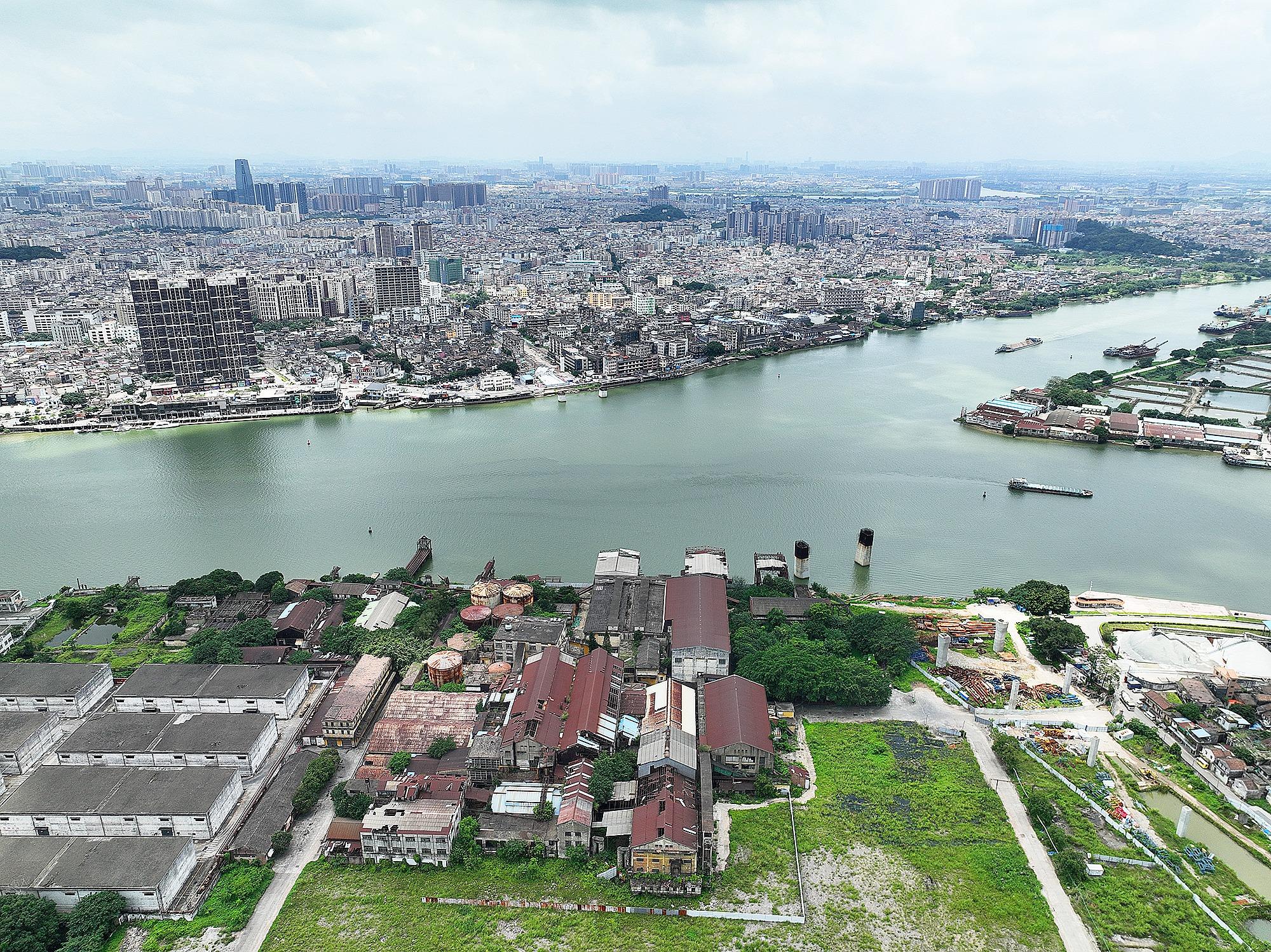 An aerial view of Foshan’s landscape, captured in May, shows how rivers shape urban and rural areas in the Guangdong-Hong Kong-Macao Greater Bay Area. (JACK YAO / CHINA DAILY)
An aerial view of Foshan’s landscape, captured in May, shows how rivers shape urban and rural areas in the Guangdong-Hong Kong-Macao Greater Bay Area. (JACK YAO / CHINA DAILY)
Laurence C. Smith, professor and vice-chairman of geography and professor of earth space sciences at the University of California, wrote in his book about how rivers serve as civilization — they used to be a massive force, akin to arteries, hum around us, carrying hidden power and fame. Today, rivers are even more tamed, bound by chains. Yet they remain an ancient force that still governs all our lives.
A river flows endlessly, while the “flow” traverses time and connects space. Civilization is a gift from water, and wherever there’s water, there’s vitality.
In the Guangdong-Hong Kong-Macao Greater Bay Area, the mighty Pearl River is not only the mother river of Guangzhou — the capital of Guangdong province, but also the cradle of Lingnan culture. Located in southern China, the GBA is situated at the mouth of the Pearl River Delta, covering an area of 56,000 square kilometers with a total population of over 86 million. It’s a key strategic region with dense river networks and the convergence of rivers and seas. For the GBA, the Pearl River connects both internally and externally, linking the south and the north.
The Lingnan civilization nurtured by the Pearl River is open and inclusive, practical and innovative. The urban development of the Pearl River Delta stands out because of the vibrant Pearl River.
Rivers are the lifelines of the GBA and the cultural heritage of Lingnan. Because of its connection to the Maritime Silk Road, the river also serves as the lifeline of urban development.
From the great river to the sea, the river has fostered a number of thriving port cities that transcend centuries and remain prosperous, establishing the position of a manufacturing powerhouse in South China. People here rely on the abundant food and water provided by the river, forming a unique culinary culture and humanistic characteristics.
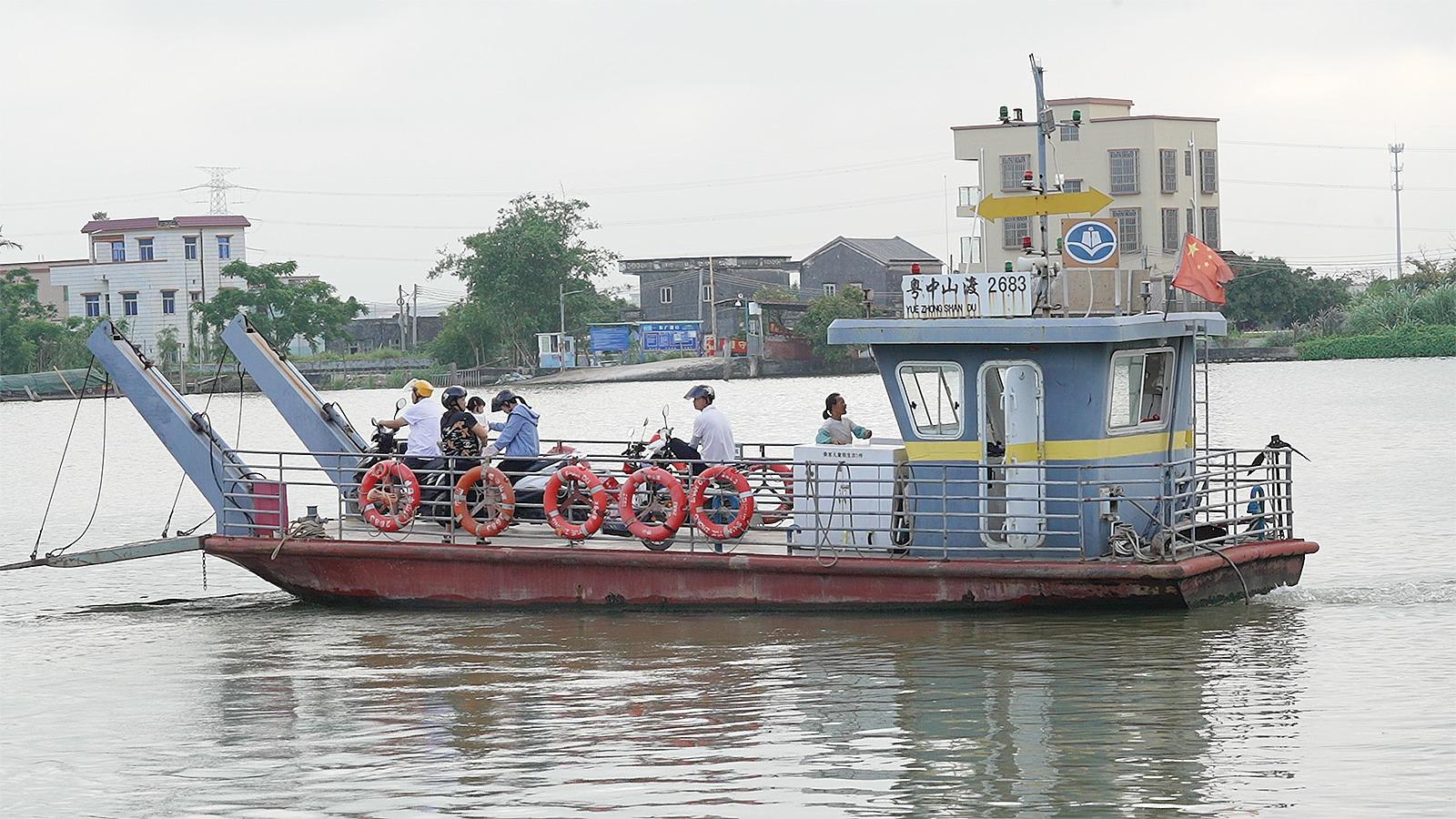 People take a ferry in Zhongshan, a city in the southern Greater Bay Area. A ferry is more than a watercraft that passengers and goods rely on for transportation — it serves as an important place for people to socialize and forge bonds. (JACK YAO / CHINA DAILY)
People take a ferry in Zhongshan, a city in the southern Greater Bay Area. A ferry is more than a watercraft that passengers and goods rely on for transportation — it serves as an important place for people to socialize and forge bonds. (JACK YAO / CHINA DAILY)
Carrier of culture
Each river has its own story flowing through it. For hundreds of years, rivers have connected people in the GBA, and small ferries have been relied upon for transportation of people and goods between villages with waterways crisscrossing them. In the early days, people not only relied on ferries, but also possessed their own boats for fishing, traveling, or other purposes.
Today, ferries have become important places for socializing and leisure activities among neighbors. Children take ferries home after school, and people engage in conversations on ferries. These docks and ferries have witnessed the changes in the GBA, carrying the unique memories of local people. Taking a ferry represents more than just transportation for local residents. It connects communities and serves as a carrier of cultural development. However, according to one resident living by the ferry, with the construction of new bridges, the operation of docks will gradually cease, and ferries will disappear. Each ferry connects the path back home, and soon, the waterway will forever remain in memory.
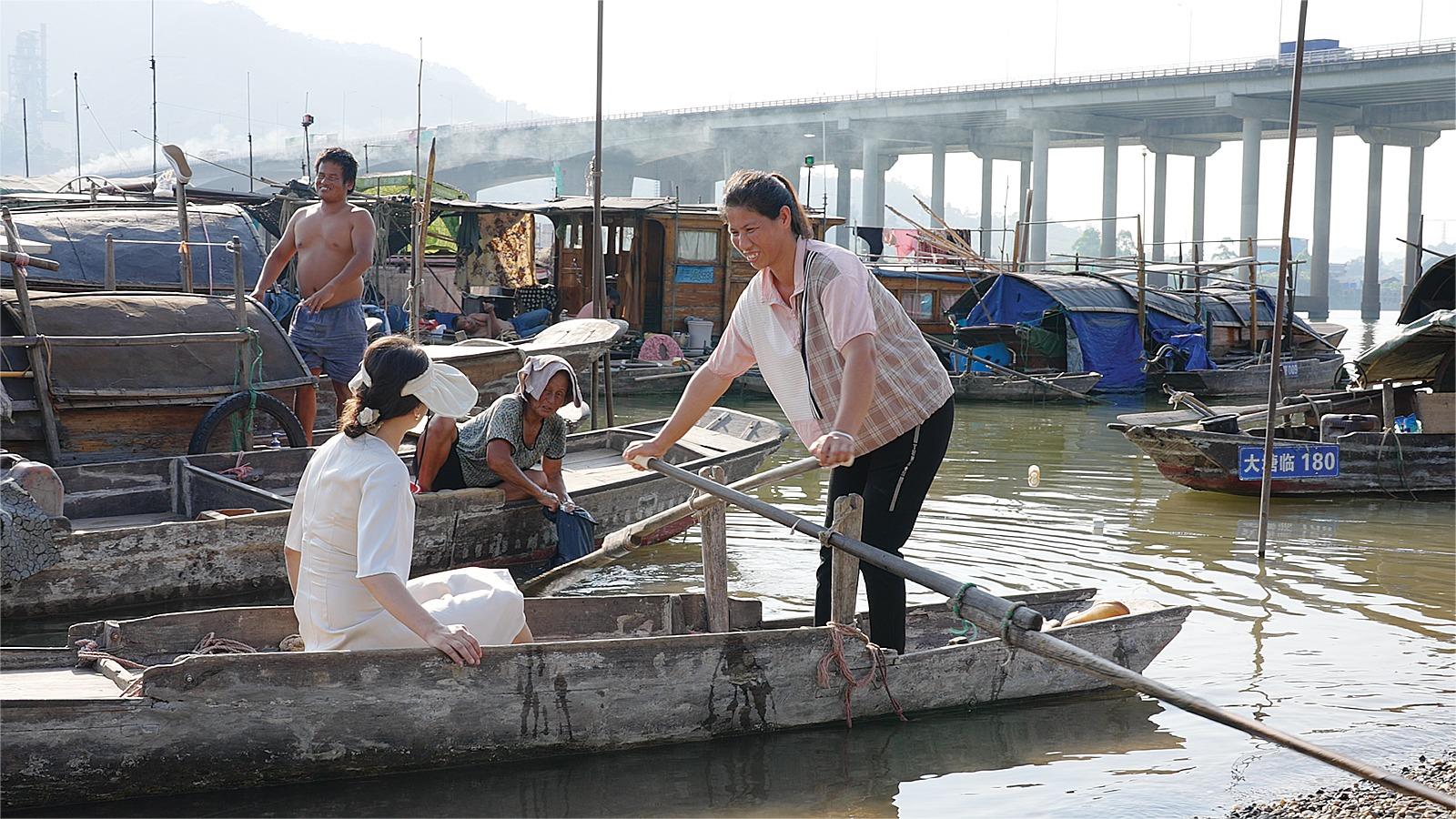 A Tanka woman navigates a Foshan river. The city has one of the Greater Bay Area’s largest Tanka communities, who traditionally live on boats, making a living from rivers and the sea. (JACK YAO / CHINA DAILY)
A Tanka woman navigates a Foshan river. The city has one of the Greater Bay Area’s largest Tanka communities, who traditionally live on boats, making a living from rivers and the sea. (JACK YAO / CHINA DAILY)
Some people rely on boats to return home, and boats are home to some of them. Tanka people, living in the Pearl River Delta, do not belong to any ethnic group, but possess a unique culture and customs. Traditionally, they make a living from rivers and the sea, and do not own property on land. Their boats are their homes, accompanied by water, and they dwell on floating houses. They have a deep emotional connection with water. The river becomes an irreversible “land” for those living on it. Tanka people have lived on boats for hundreds of years but, with changes in the economic landscape, relying solely on fishing can no longer meet their survival needs. Nowadays, they have gradually moved ashore.
Tanka people coexist with the water, and as they continuously go landward, a Tanka woman surnamed Xin says she and many Tanka people still prefer to live on the boat since the meaning of the river to the Tanka is extraordinary. “Even after they have come ashore, Tanka people do not cut their ties to water completely. Instead, they have combined two lifestyles — at times living on boats and, at other times, living ashore when fishing is restricted.”
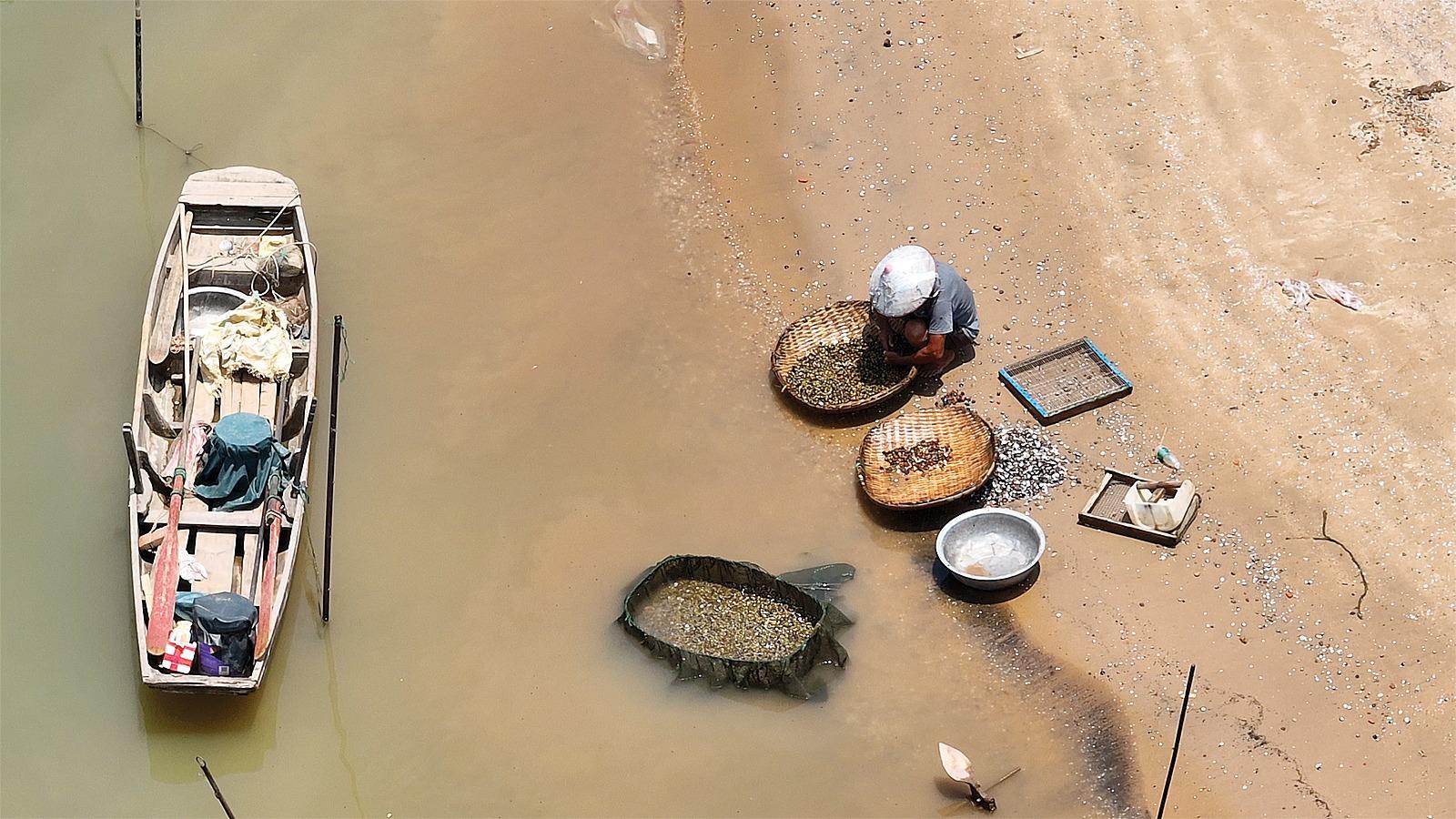 A Tanka person sorts through a fresh catch of clams on the riverbank. (JACK YAO / CHINA DAILY)
A Tanka person sorts through a fresh catch of clams on the riverbank. (JACK YAO / CHINA DAILY)
Pride of an era
Tanka people’s daily lives have been changing, as are the industries in the GBA. For a long time, relying on river transportation and water resources, industries have prospered along the rivers, laying a solid foundation for the Pearl River Delta to enter the industrial society and making the place a renowned industrial center.
The sugar and silk industries were once prosperous. The sugar business brought economic benefits to the region and became a pride of the era. The Shunde sugar factory was built in 1934 and symbolized innovation at that time. However, the once-prominent refinery is now a heritage site, showing people its history as China’s first mechanical sugar mill.
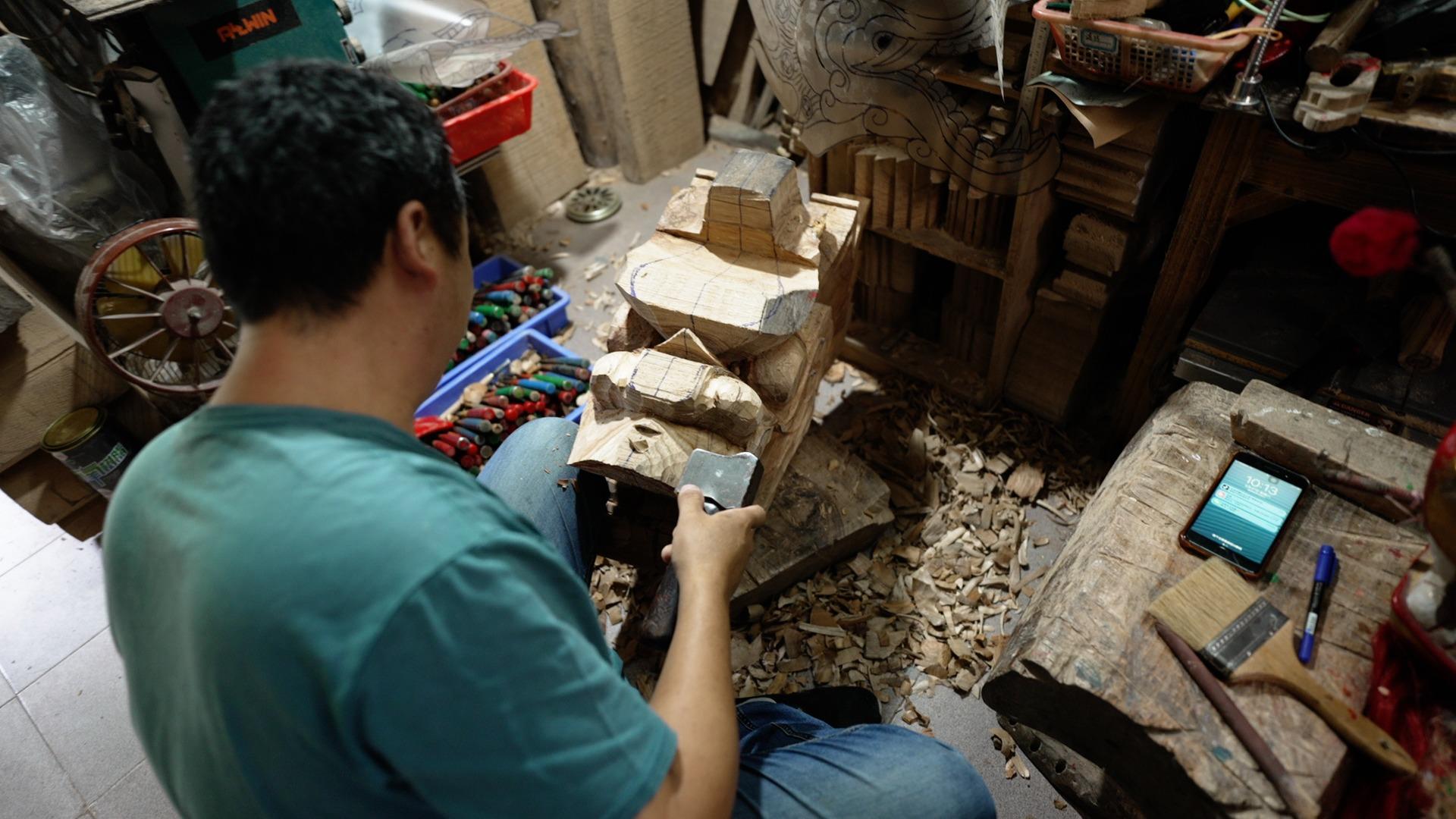 Craftsmen in Foshan sculpt a head and paint a tail for dragon boats, which are set to be used for locals’ beloved dragon boat racing, a popular water sport among residents in the Greater Bay Area. (JACK YAO / CHINA DAILY)
Craftsmen in Foshan sculpt a head and paint a tail for dragon boats, which are set to be used for locals’ beloved dragon boat racing, a popular water sport among residents in the Greater Bay Area. (JACK YAO / CHINA DAILY)
To improve sugar cane production, a plantation called Daliang Wusha was established in 1951, growing sugar cane for domestic consumption and export after processing and experimenting for better sugar-cane products. According to the workers that still live beside the plantation, it had existed for only three decades before being forced to close down, leaving behind this community and some abandoned buildings used during the cultivation process.
The silk industry developed in the 19th century. Its heyday has long since gone, and a mill called Nanhai silk factory had to stop mass production because of high operating costs and insufficient manpower. The factory now serves as an inheritance center and a field trip destination for people to learn traditional reeling techniques and about the development of the silk industry in the Pearl River Delta. With the passage of time, industries undergo transformation, reflecting the sign of the times.
An engineer of the silk factory, surnamed Luo, sums up the situation: “I was assigned to Nanhai silk factory in August 1991. At that time, the factory had silk reeling machines, and 10 of the 12 machines were automatic. Later, as the workers retired and recruitment became difficult, we reduced the number of machines and the scale of production.”
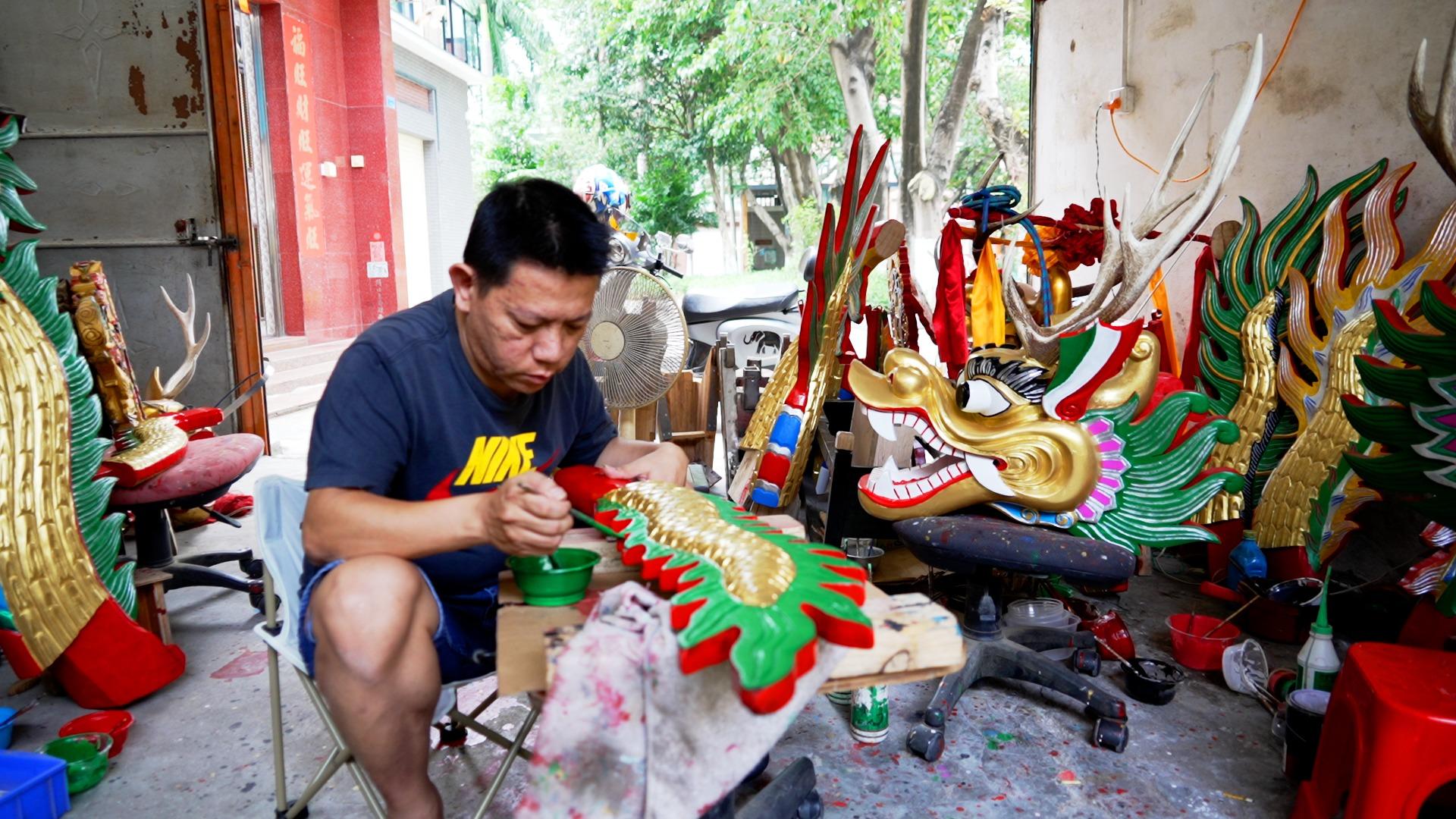 Craftsmen in Foshan sculpt a head and paint a tail for dragon boats, which are set to be used for locals’ beloved dragon boat racing, a popular water sport among residents in the Greater Bay Area. (JACK YAO / CHINA DAILY)
Craftsmen in Foshan sculpt a head and paint a tail for dragon boats, which are set to be used for locals’ beloved dragon boat racing, a popular water sport among residents in the Greater Bay Area. (JACK YAO / CHINA DAILY)
Festivities of water
No matter to what extent river stories are fading, they can still be alive because of human activities. The dragon boat culture of the Pearl River Delta reflects the deep celebratory relationship between people and water. Moreover, its skills, religious beliefs, and aesthetics embody the essence of Chinese culture. Dragon boat culture originated in the ancient Chu civilization and dates back to 278 BC. In river-laden Guangdong, dragon boat racing has long been included as an essential activity during the Dragon Boat Festival. In Guangdong, the festivities extend beyond a single day. From rituals, refurbishment of dragon bodies, attaching dragon heads and tails, and launching the boats, each step relating to dragon boats carries a strong sense of ceremony. As a form of celebration, dragon boats bring communities together. Because of dragon boats, rivers become lively, carrying local culture and the beliefs of villages.
Tanka people make the river lively, and so does the dragon boat, says Liang Weidong, a craftman in the Daliang area of Foshan. The entire process includes bringing the client samples, designing the blueprints, cutting the wood, carving, polishing and painting. He says the cultural heritage of dragon boats requires hard work. “We have to be able to withstand the hardship. Like the one I’m working on now, we have been rushing through it for months and, sometimes, I had to work till 2 or 3 o’clock in the morning. And I need to call my friends over to help me to paint. There’s really no way, one person can’t do much.”
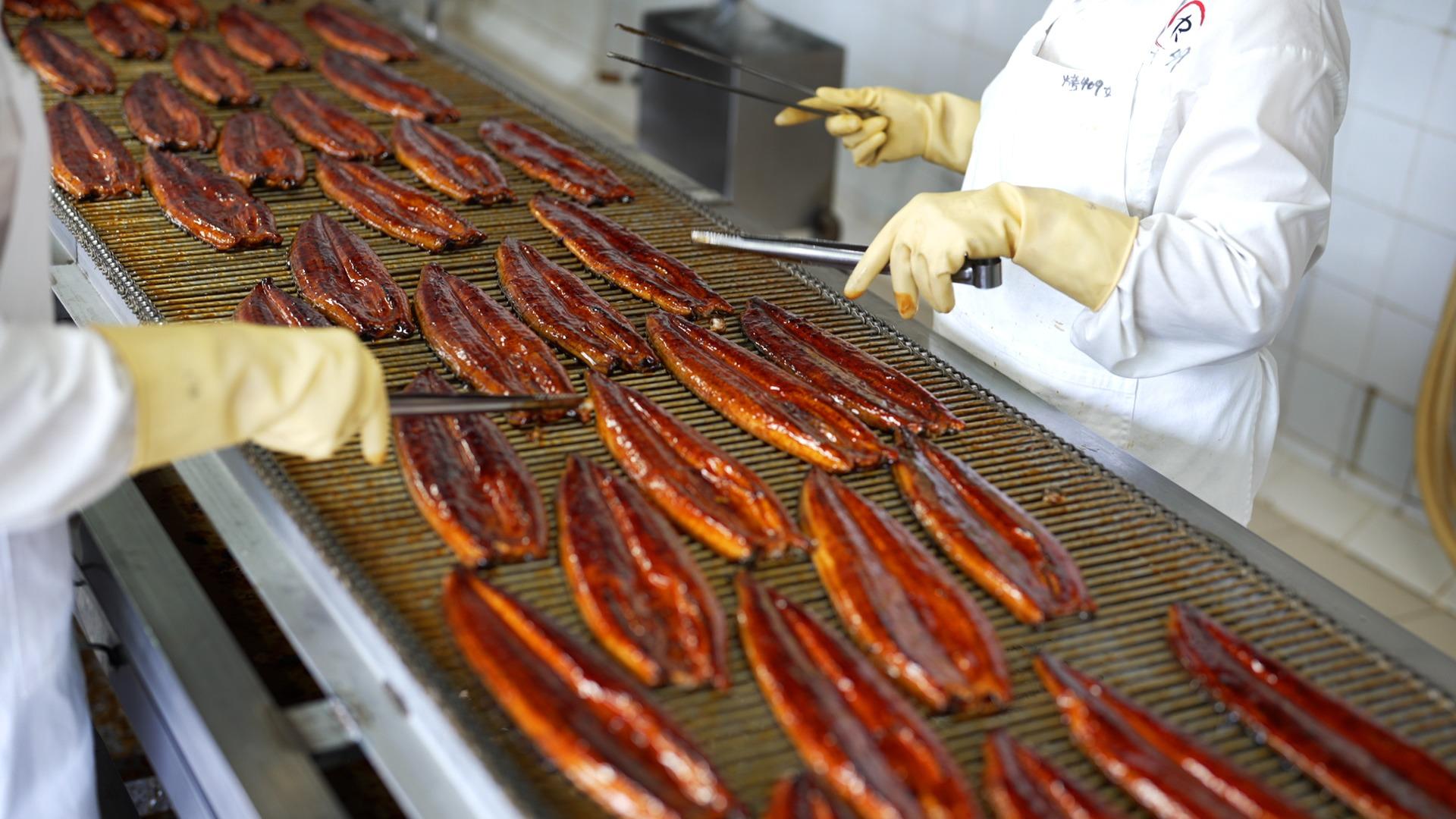 Workers process eel, a world-renowned specialty of Foshan’s Shunde district, at Herong Food Co. (JACK YAO / CHINA DAILY)
Workers process eel, a world-renowned specialty of Foshan’s Shunde district, at Herong Food Co. (JACK YAO / CHINA DAILY)
Gifts from the rivers
Rivers have given rise to ancient human civilizations. In the process of domesticating rivers, humans have relied on technology to develop new hydro-energy industries. Rivers’ pulses are deep and powerful, and are tightly related to cities, folklore, change, as well as global and localized imagination. They also have the property of sharing — a river is often not owned by a single country, but provides access and nourishment to everyone in the region through which it flows.
The Cantonese food culture is a flourishing scene thanks to systematic innovations. For instance, Foshan’s Shunde district is famous for its eel. “In our factory, eels are pre-made,” says Feng Yu, deputy general manager of Herong Food Co, which adopts a central-kitchen approach of pre-making, leading to a productive process of food marketing. Feng says that because most processing of eel is done in the factory, the pre-made products help restaurants reduce food losses and labor costs while allowing them to reduce the kitchen size and have a bigger dining area to hold more customers.
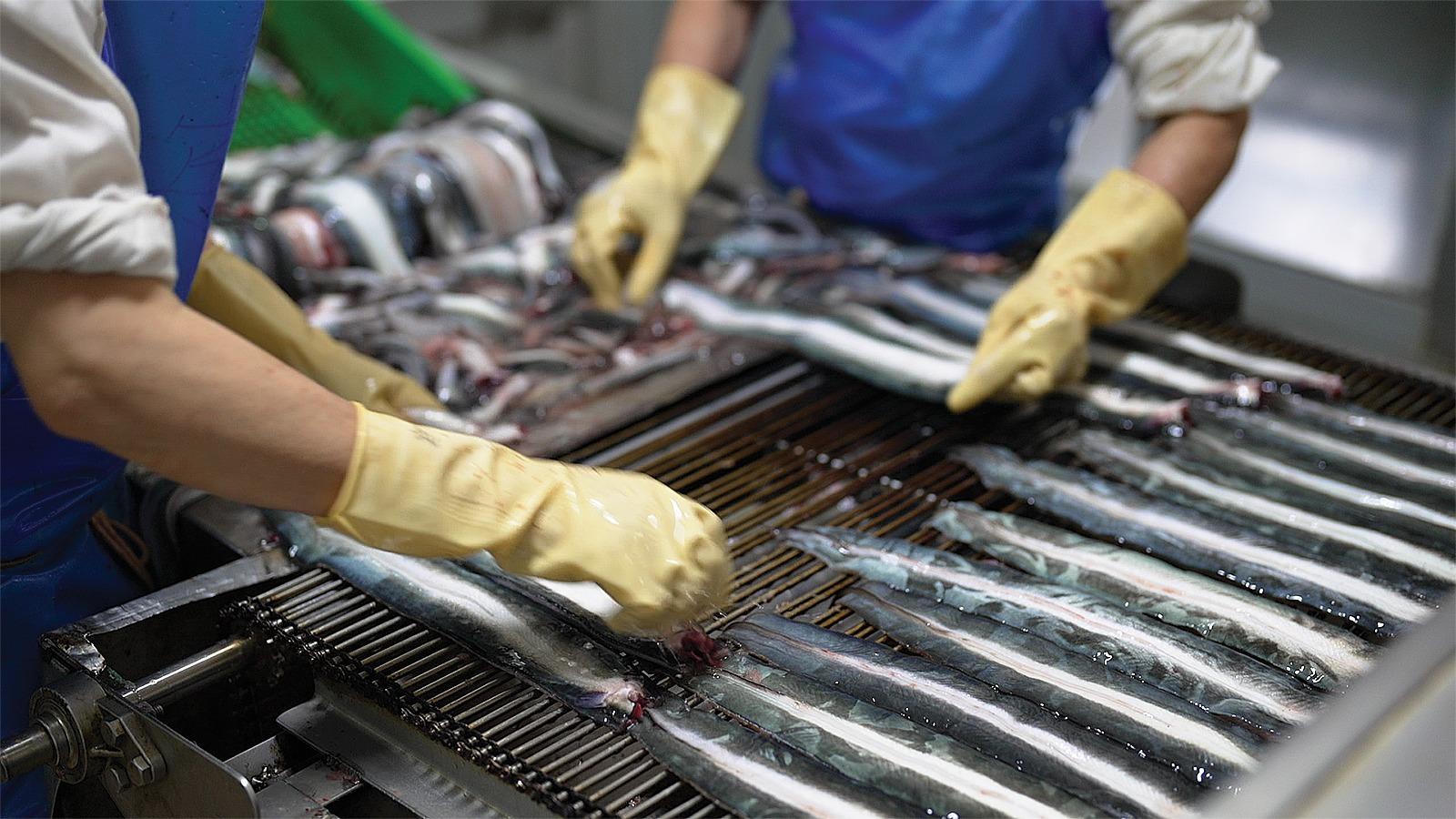 Workers process eel, a world-renowned specialty of Foshan’s Shunde district, at Herong Food Co. (JACK YAO / CHINA DAILY)
Workers process eel, a world-renowned specialty of Foshan’s Shunde district, at Herong Food Co. (JACK YAO / CHINA DAILY)
Lionel Brett once said that what everyone needs is not just a piece of land, but a place where one can enrich oneself and become oneself. In this sense, a place cannot be bought and sold. It can only be generated through people’s ordinary daily activities over a long period of time. It requires people to give specific boundaries and meanings through love. At the same time, it also requires careful nurturing.
One cannot separate oneself from the rivers. Regardless of when and where the rivers are, they always pull people toward their homeland.
Xiao Jian is an associate professor in the Department of Media and International Culture at Zhejiang University. Wang Luxuan is an undergraduate in film at the university.



